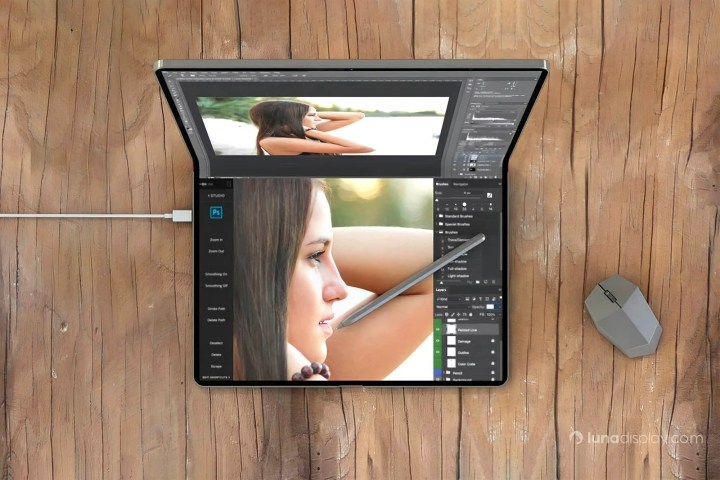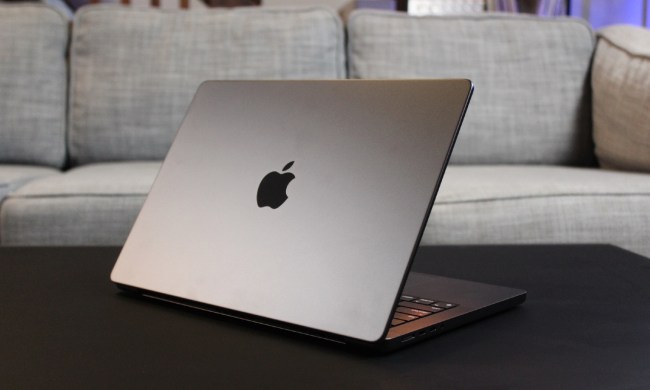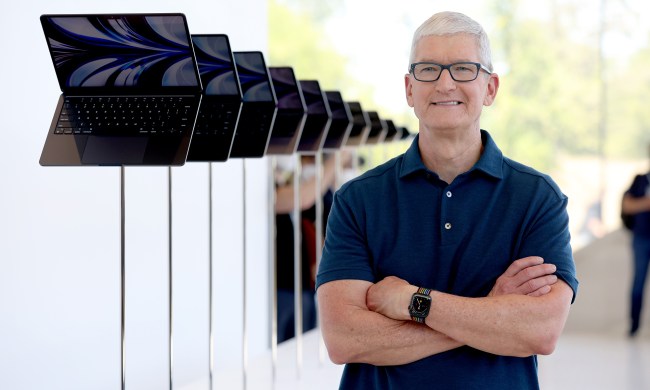Apple is working on thinner MacBook OLED panels that could be used in future folding laptops, according to a new report from The Elec. That in turn could help the device that the panels go into be as thin and light as possible, making it an attractive prospect for users.
While this tech is probably a few years from being realized, it is still an interesting hint as to the future of Apple’s devices. It also adds to the growing pile of rumors indicating that Apple has a secret foldable device in its skunk works.

The report states that the new-fangled panels will come without polarizers. Normally, polarizers are used to only allow light from certain directions to pass through the panel. That results in improved visibility when using a device with a polarizer.
However, the downside is that polarizers can reduce display brightness. This is combated by increasing power, but this, in turn, eats into the display’s lifespan. The other main drawback is that polarizers increase panel thickness. By taking the polarizer out of the equation, panels can be made thinner and less power-intensive.
And how does this relate to folding MacBook displays? It’s simple — a thinner screen panel will likely fold more easily, potentially increasing its longevity and ease of use. And besides, we all know Apple loves its products to be thin and light, so anything Tim Cook and friends can do to strip away unnecessary bulk could well be in the cards.
That’s likely to be true of the device as a whole. Leaks and rumors have indicated the device will be an iPad/MacBook mashup, so anything as portable as a tablet needs to be thin and lightweight. With a super-slimline display, Apple will also likely look to cut down the weight elsewhere. In other words, this device could be light as a feather, both to fit its use cases and Apple’s own aesthetic tastes.
No compromises on visibility

The Elec adds that Apple will likely replace the polarizer with “technology with similar effect,” meaning MacBook users won’t have to put up with sub-par visibility for the sake of a flashy folding laptop.
Previously, Samsung made a similar move, according to The Elec. After removing the polarizer, Samsung printed a color filter on the panel’s thin film encapsulation, then added a black pixel define layer made of polyimide. It’s possible Apple could take a similar approach.
News concerning Apple’s folding MacBook efforts has increased in recent months, suggesting Apple’s top-secret project could be picking up steam. In February, display industry expert Ross Young alleged Apple has a 20-inch folding device in the works, while in early April we learned that Apple’s folding screen could use ultra-thin glass instead of the more common polyimide.
Still, don’t expect to see the fruits of Apple’s labor any time soon. Both Young and Apple analyst Ming-Chi Kuo have said 2025 is the absolute earliest date the device could launch, and 2026 or 2027 are considered much more likely possibilities. Given the complexity of the tech, it’s likely to be expensive. Better start saving the pennies.



